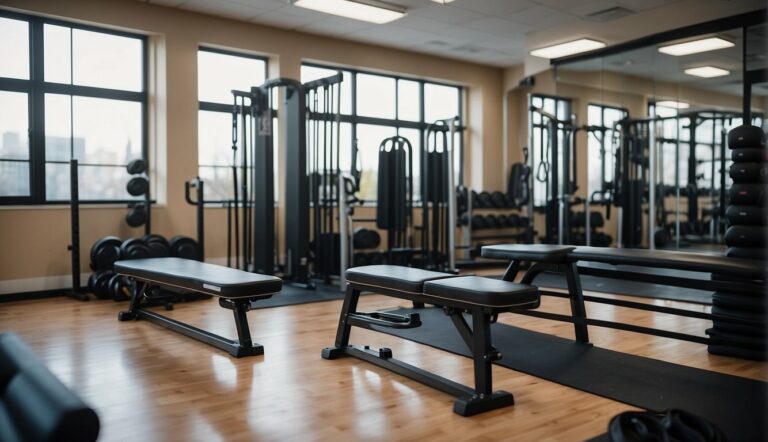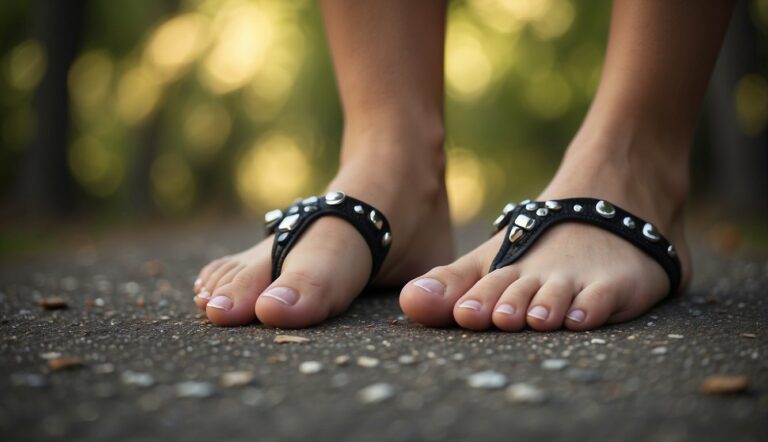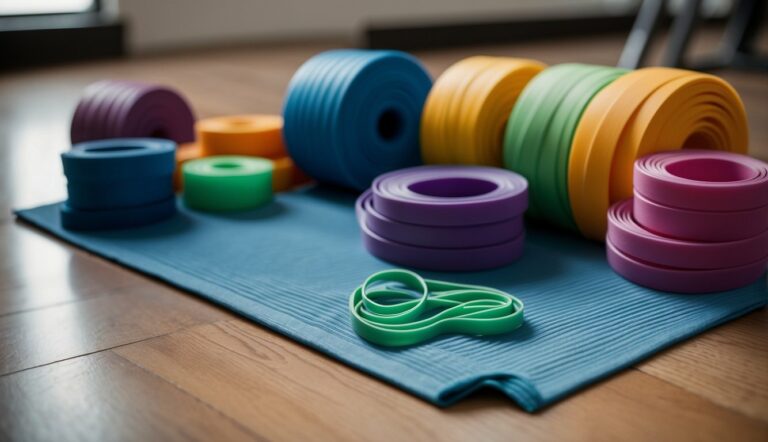Can You Wear Toe Spacers with Shoes? – A Guide to Comfortable Footwear Choices
Toe spacers are designed to realign your toes to their natural position, which can have a range of benefits for foot health. Many people wonder if they can wear toe spacers comfortably while donning their favorite pair of shoes. The answer is yes, but it depends on the type of shoe and the design of the toe spacer. A good rule of thumb is to choose shoes with a wide toe box to accommodate the spacers without causing discomfort.
In my experience with toe spacers, the key to successfully wearing them with shoes is to ensure the spacers are not too bulky and the shoes provide enough room so as not to compress the toes. It’s important to allow the toes to spread naturally. Some toe spacers are made specifically for use with shoes and are slimmer to fit comfortably. When selecting toe spacers, it’s best to consider the specific activities you’ll be engaged in while wearing them, as this can influence the ideal type of spacer and shoe combination.

Can You Wear Toe Spacers with Shoes?
Wearing toe spacers with shoes is possible, but it depends on the type of toe spacers and the shoes you intend to wear. Here are some considerations:
- Shoe Fit: Your shoes should have a wide enough toe box to accommodate the toe spacers without causing pressure or discomfort. Shoes that are tight or have a narrow toe box may not be suitable for wearing with toe spacers.
- Spacer Design: Some toe spacers are designed to be worn while active and can fit inside shoes while others are not designed to be worn inside shoes.
- Duration: If you’re new to toe spacers, it’s recommended to wear them without shoes first to allow your feet to adjust. Once you’re comfortable, you can try wearing them with shoes for short periods and gradually increase as tolerated.
- Type of Activity: Consider the type of activity you’ll be doing while wearing toe spacers with shoes. Some activities may be more suitable than others for this combination.
- Comfort and Safety: Always prioritize comfort and safety. If wearing toe spacers with shoes causes any pain or discomfort, it’s better to avoid doing so.
It’s important to listen to your body and, if in doubt, consult with a foot health professional to determine the best approach for using toe spacers with shoes in your specific case.
Wearing Toe Spacers with Shoes
When integrating toe spacers with daily footwear, it’s crucial to choose the right shoes and heed professional advice to avoid discomfort and ensure efficacy.
Selecting Compatible Shoes
To wear toe spacers effectively while donning shoes, one must consider footwear that offers ample space and a wide toe box. Barefoot shoes or models with a minimalist design typically provide the required room for toe spacers to fit comfortably.
I’ve found that these shoes not only accommodate toe separators but also support natural foot biomechanics, enhancing the benefits of the spacers. Here’s a quick reference to select appropriate shoes:
- Roominess: Ensure at least a thumb’s width of space between the longest toe and the shoe end.
- Width: Shoes should allow lateral space for the spacers without compressing the toes.
- Arch Support: Proper arch support in shoes can complement the corrective nature of toe spacers.
Advice from Podiatrists
Podiatrists stress the importance of gradually introducing toe spacers into your routine to avoid overcorrection or discomfort. They advise starting with short periods of use, perhaps during quieter activities before advancing to walking or running.
Walking in shoes with spacers can align your foot posture and enhance overall foot health, but it’s essential to listen to your body and ease into longer durations. If you experience significant discomfort, it would be wise to consult with a podiatrist who can provide personalized advice.
- Begin with limited wear time and gradually increase.
- Consult with a podiatrist if discomfort persists.
- Monitor your feet’s reaction to the spacers and adjust accordingly.
Toe Spacer Usage Guidelines

When incorporating toe spacers into your routine, whether for daily wear or during exercise, there are specific guidelines to follow for their use. These spacers can help address conditions like hammertoes and improve the overall alignment of the toes. Let’s explore how you can optimize the use of toe spacers.
Daily Activities and Exercise
I find that toe spacers like Correct Toes can be comfortably worn during a variety of daily activities. Individuals, particularly athletes and runners, may benefit from wearing toe spacers in their shoes, provided there’s enough room. For exercises such as yoga, which can be akin to yoga toes exercises, toe spacers offer additional benefits but should not hinder movement or cause discomfort.
- Suitable activities: Walking, light jogging, yoga
- Key considerations: Ample room in shoes, toe spacer material flexibility
Duration and Frequency of Use
For newcomers, I suggest starting with short periods of wearing toe spacers and gradually increasing the duration as the feet adjust. The frequency of use typically depends on the individual’s comfort and the specific conditions they might be addressing, such as hammertoes or misalignments.
- Starting point: 30 minutes to 1 hour per day
- Progression: Add 30 minutes incrementally each week
Remember, as a non-medical professional, my recommendations are based on experience and should not replace medical advice. It’s best to consult with a healthcare provider for personalized guidance.
Potential Issues and Solutions
When wearing toe spacers within shoes, we must be cautious of potential discomfort and the effects on existing foot conditions. My guidance will help you navigate these challenges effectively.
Dealing with Blisters and Sores
Blisters and sores can occur from continuous friction when toe spacers are used with shoes. To prevent these issues, ensure that your shoes have a wide toe box and soft material that reduces pressure points. Utilize cushioning pads and choose toe spacers made of soft, skin-friendly materials.
For those with diabetes, monitoring the feet for any abrasions is crucial, as their healing process is often slower and can lead to complications.
Addressing Foot Deformities and Recovery
Foot deformities, such as hallux valgus and hammertoe, can be managed by correctly using toe spacers to support realignment during the recovery process.
In combination with footwear that accommodates the toe spacers, they can help relieve the tension on the plantar fascia and assist in correcting the foot posture. However, it’s essential to select the appropriate size and firmness of the toe spacer to avoid exacerbation of the deformity. If discomfort or further issues arise, consulting a professional is advisable.
Selection and Maintenance of Toe Spacers
Selecting the right toe spacers and maintaining them properly is crucial for their effectiveness and durability. Whether dealing with foot problems like hammer toe or simply seeking more comfort, the right pair can make a significant difference.
Choosing the Right Toe Spacers
When picking toe spacers, I always consider the material and design. Silicone gel is a popular choice due to its flexibility and comfort. It’s important to choose a design that fits your specific needs—some toe spacers cater to the big toe, while others offer a more comprehensive foot gear solution.
For those wearing shoes, make sure the toe spreaders are slim and fit well within your footwear. It should be comfortable and not cause additional pressure on your toes.
Cleaning and Care
To keep your toe spacers in top condition, cleaning them regularly is a must. For silicone gel spacers, I recommend using mild soap and warm water. Rinse them thoroughly to remove any soap residue.
Allow them to air dry; do not expose them to direct heat, as it may affect the materials’ integrity. Store them in a clean, dry place when not in use to prevent the buildup of bacteria.
Types of Toe Spacers

Toe spacers come in a diverse range of materials and designs, each serving a specific purpose. Whether you need relief from foot pain or are looking to improve toe alignment, the right toe spacer can make a difference.
Materials and Design
Toe spacers may be crafted from various materials, with silicone and gel being the most common due to their flexibility and comfort. Medical-grade silicone toe spacers are durable and hypoallergenic, offering a balance between softness and firmness.
Rubber and foam options exist for those seeking a firmer fit, while cotton is sometimes used in fabric-based spacers for breathability. The design of toe spacers can range from individual toe loops to full-foot inserts, each accommodating different needs. The most adaptable toe spacers are typically made of medical-grade gel, which molds to the foot’s contour for a personalized fit.
Specific Conditions and Usage
For conditions like hallux valgus, specialized toe spacers can be worn, with some designed for use with insoles to maximize pain relief. The design of these spacers often includes a night splint for correcting toe misalignment. Toe spacers intended for daily use with shoes should correspond to your footwear’s size and provide adequate space for comfort.
For example, the use of a toe spacer between the first and second toes has shown positive effects in treating onychocryptosis, a nail condition. When selecting a toe spacer for regular wear in shoes, it’s essential to consider if the spacer fits well in the shoe and whether it helps with the condition it is being used to address.
Benefits of Toe Spacers
When considering toe spacers, it’s important to understand how they can alleviate discomfort and promote better foot health. They’re not just about spacing your toes; they’re a practical tool for enhancing overall foot function.
Pain Relief and Comfort
Toe spacers can significantly decrease foot pain related to conditions such as bunions and plantar fasciitis by realigning the toes to their natural position, which mitigates pressure and friction. I’ve found that proper toe alignment provided by spacers often translates to immediate pain relief and a more comfortable gait.
Foot Health Improvement
Consistent use of toe spacers can lead to improved foot health. By preventing toes from overlapping, spacers can help prevent skin irritations and the formation of soft corns. Stronger toe muscles from the improved position often reduce the risk of developing further foot problems.
Enhanced Mobility and Balance
With better-aligned toes, I’ve noticed an enhancement in my mobility and balance. Toe spacers promote a more stable base for standing and moving, which can improve stability and foot strength, leading to a more confident and efficient stride.





